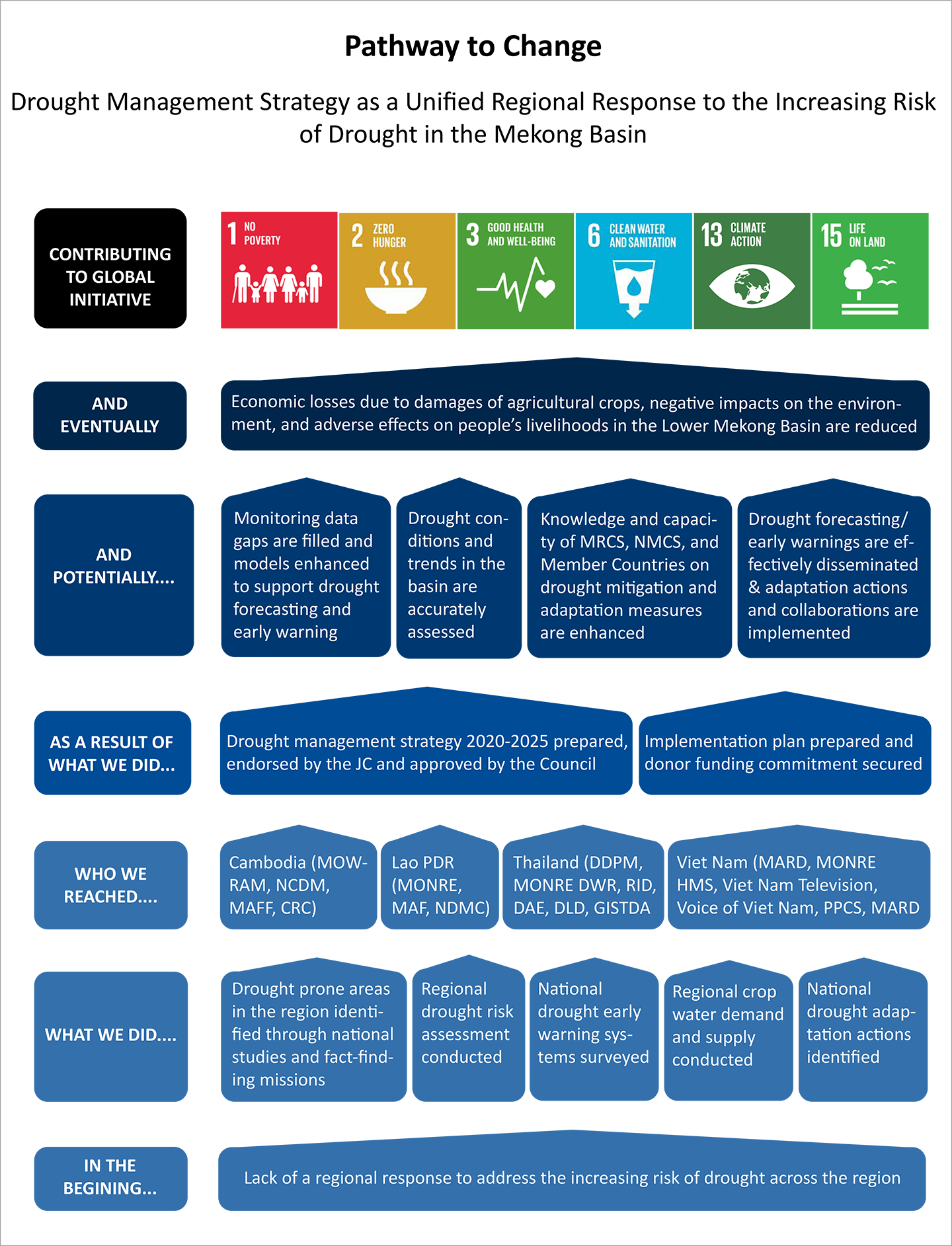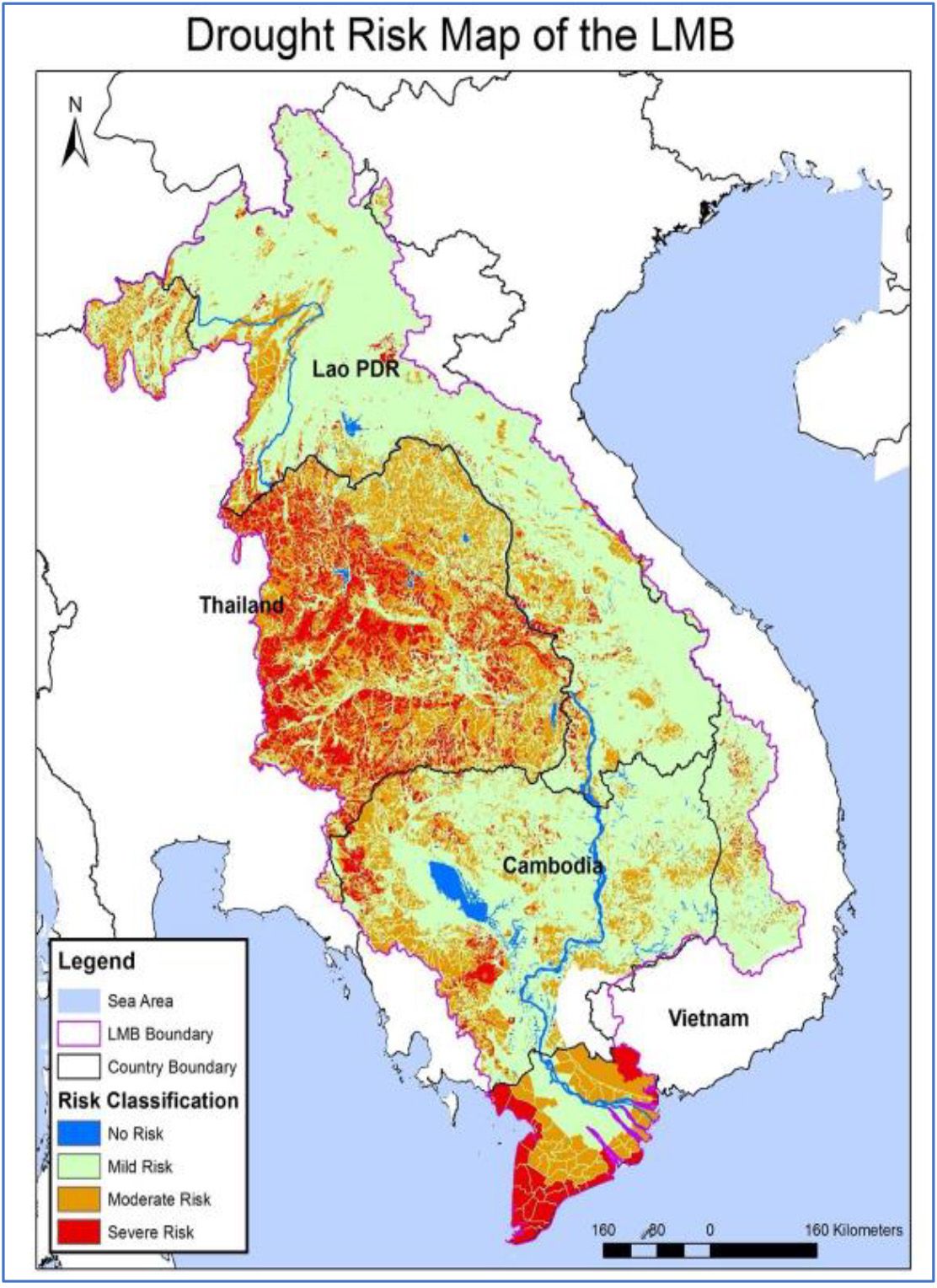OUTCOME 2 - SUCCESS STORY 1 Drought Management Strategy as a Unified Regional Response to the Increasing Risk of Drought in the Mekong Basin
Indicators:
- Evidence that National Plans benefit from basin-wide strategies and action plans


Highlights
The MRC Drought Management Strategy for 2020-2025, a regional strategy that serves as a response of MRC MCs to the urgent needs of the region to address the increasing risk of drought across the region, was completed and subsequently endorsed by the Joint Committee (JC) and approved by the Council in November 2019. With initial funding secured for its implementation, the regional strategy is anticipated to immediately lead to tangible outcomes in the Mekong region. These outcomes include:
- Gaps in monitoring data and models are filled to support drought forecasting and early warning;
- Drought conditions and trends in the basin are accurately assessed;
- Knowledge and capacity of MRCS, NMCS, and MCs in identifying and implementing drought mitigation and adaptation measures are enhanced;
- Impact mitigation and collaboration implemented; and
- Drought forecasts and early warnings are effectively disseminated.
To the public, the approval of the Strategy was timely, as it came at a time of historical low flow year in the Mekong. Press and social media coverages of the Strategy announcement were extensive, raising the profile and proactiveness of the MRC in addressing an urgent issue.
Strategic Priority Areas of DMS 2020-2025
The DMS 2020-2025 priority areas, hence its proposed outputs and activities, are organised in five main clusters namely:
- Indicator Monitoring: This includes hydrometeorological and reservoir monitoring, monitoring of dry season flows under PMFM and PWUM, groundwater monitoring, soil moisture and crop condition monitoring, and salinity level monitoring.
- Drought Forecasting and Early Warning: This includes drought monitoring, forecasting and early warning.
- Capacity Building in Drought Assessment and Planning: This includes national and regional trainings, regional and international workshops and conferences, and experience of exchanges with other river organisations.
- Mitigation Measures: This includes collaboration with MRC Dialogue Partners and with national agencies and regional institutions on drought disaster management. It also includes the feasibility study on basin water retention through collaboration with Thailand on the Monkey Cheeks or Kaeng Ling project, water demand management measures, development of guidelines on drought adaptation, and pilot activities on drought adaptation measures.
- Information Sharing and Dissemination: This includes drought information dissemination, and drought data and information documentation.
The MCs acknowledge the need to coordinate their drought mitigation actions such as those shown in the Table 4 below that list such actions by responsible line and implementing agencies.